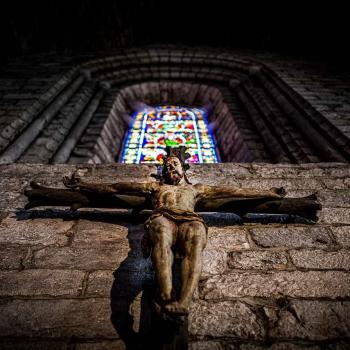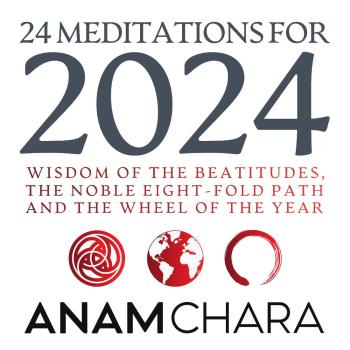
A reader of this blog wrote to me about the practice of silent prayer. He alluded to a comment I made in an interview where I talked about allowing my breath to be my “prayer word” — in other words, instead of focussing my attention by silently repeating a single word (as promoted by The Cloud of Unknowing and Centering Prayer), I allow the normal rhythm of my breathing to be that gentle focal point for my attention. So with that in mind, here is the reader’s questions:
1. Do you continually focus on breath (outside infused contemplation of course)?
2. So one can practice more than one type? I ask because I wonder whether doing a concentrative type is helpful too esp when trying to be mindful on say the breath during the day. I do martial arts so something like focusing on the breath would help whereas I would do Maranatha Meditation for prayer (or Jesus Prayer).
I’ll begin with your second question. Christian spiritual practices are different in some ways from other contemplative traditions, like various schools of Buddhism. I think it’s common in eastern spiritual traditions to have a more structured discipline of meditation — in other words, more of an emphasis on following the instructions of your teacher, and of keeping a consistent practice — one specific technique of meditation, or not changing the mantra, that sort of thing.
In the Christian tradition, an emphasis on structure is found more in the liturgy than in individual prayer or meditation practice. There’s a “right way” to pray the Daily Office, which is usually done in a community setting. But when it comes to private practices, like lectio divina or various forms of “mental” or contemplative prayer, there seems to be more latitude.
As one of my monastic teachers was fond of saying, “pray as you can — not as you can’t.”
It’s Okay to Pray in Different Ways
So that said, I know of no Christian teacher of prayer or meditation who requires his or her students to only practice one type of prayer. I myself am regularly engaging in both silent/apophatic/”centering” forms of prayer, but also more content-rich, imaginative, “Ignatian” exercises. Of course, I’m a Lay Cistercian who works for the Jesuits, so naturally both of these approaches to prayer are a big part of my world!
And the more I think of it, even in the eastern world students of meditation will learn a variety of techniques or practices. Shamatha and vipassana are fundamentally different types of meditation: shamatha is a “calm abiding” or relaxed-awareness meditation, while vipassana means “insight” or clear seeing. While a student might be expected to follow the instructions of his teacher or guru, there is still the possibility of practicing more than one type of meditation.
Back to Christianity: yes, it’s possible to engage in different types of prayer or meditation. Whether it is useful to do so is another question, and since everyone is different and everyone has different needs or concerns at different points in life, it’s impossible to address that issue through a blog post. This is why having a spiritual companion or spiritual director is so valuable. Being able to discuss our unique needs and challenges with a trusted guide is really essential for a maturing spiritual life.
The Breath and the Awareness in Silent Prayer
Now, about focussing on the breath. Centering prayer, as a practice, involves using a repeated prayer word to calm and focus our attention — but there is a recognition that sometimes, the prayer word will “fall away” and the person who is praying will simply rest in the silence of the Divine Presence.
Clearly, our breath does not “fall away.” But I think it is possible that our attention on our breath might open up to a more subtle, more gentle resting in a non-focussed awareness of silence and presence. We still our breathing, of course; but our awareness is not focussed on the breath.
In my experience, such graced moments of n0n-focussed awareness seem timeless, so it’s hard to say how long they last. A few seconds? Maybe longer? I’m sure it varies. But what usually happens in my prayer is that eventually my “inner commentator” will chime in, usually with some variation of “Isn’t this wonderful!?!”
And at that point, I realize that I am distracted, and so I return to resting my attention on my breath.
My reader alludes to “infused contemplation.” I think the point here is that such opening-up moments really are graced, or “infused” — they are a gift of the Spirit, not something we can engineer for ourselves. Such moments are shaped by radical self-forgetfulness, which is like falling asleep: it’s not something we make happen, only something we can allow to happen.
I hope this is helpful! Thanks for the questions!
Enjoy reading this blog?
Click here to become a patron.














